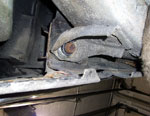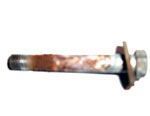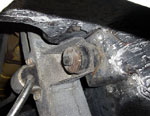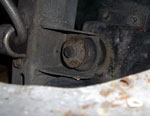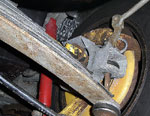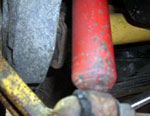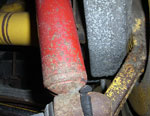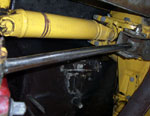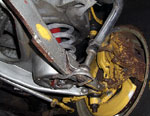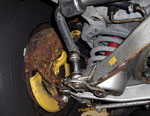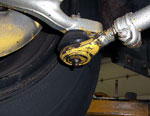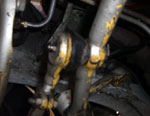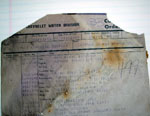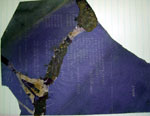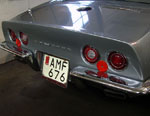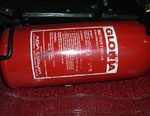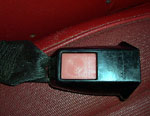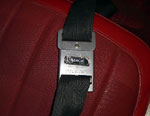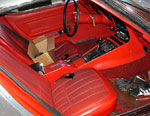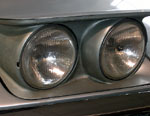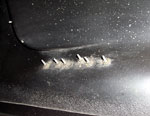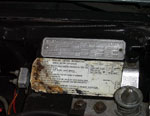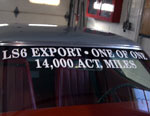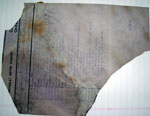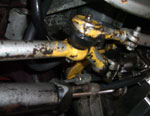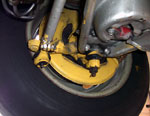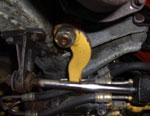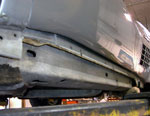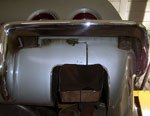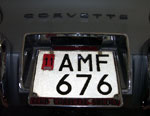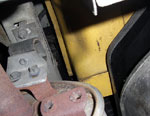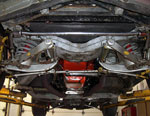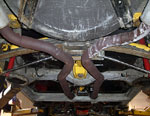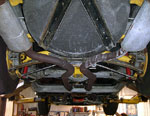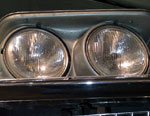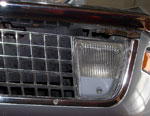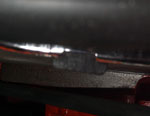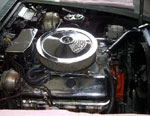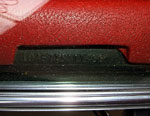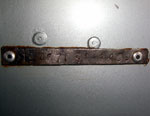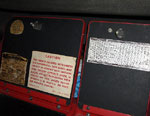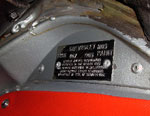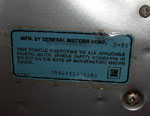

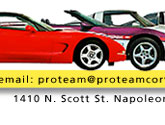


![]() New Arrivals
New Arrivals
1953-55
1956-57
1958-60
1961-62
1963-64
1965-66
1967
1968-72
1973-79
1980-82
1984-96
1997-10
Offer to
Purchase
Money Back
Guarantee
Sell Us
Your Corvette
Request a
Vette
Testimonials
Project Cars
Site Index
Contact Us
Join ProTeam's
newsFlash list email:
|
1971 LS6 Export Corvette with 21,988 kilometers/13,668.923 actual miles • VIN #194671S111499 • Stock #PRC.35
Owner Statement
#11499 is Silver/Red LS6 Convertible with an automatic transmission that was exported to europe through General Motors Continental Antwerpen.
Sometime in 1994 number 11499 was reimported back to the U.S. by a German Corvette dealer.
I have been trying to buy this Corvette for almost 15 years and finally did so in early January 2009 with the goal to have it Flight judged and try for a Bloomington Benchmark® as it is very low miles with original paint, interior, driveline, and what I thought were mostly original components.
I called John Ballard of Louisville, Kentucky in early February and asked him to meet with me, my brother, Fred, and our shop manager, Billy Rodenhauser to examine our 1971 export LS6 in hopes that John could direct our team in the right direction to clean and prepare this car for possible Bowtie judging, Flight judging, Bloomington Survivor®, Bloomington Gold and maybe even the long shot of the Bloomington Benchmark® award.
John met with our team on February 18th, 2009 in Napoleon, Ohio where we had the car in the hoist area of our shop.
John and our team first examined the car on the ground, ie: the body, paint, interior, trim, engine compartment, and we all felt very comfortable that little would need done in this area as they were quite original and relatively untouched.
We decided to leave the european seat/shoulder belts, fire extinguisher, headlights, extra rear markers, kilo speedometer alone as the car has its original tank sticker showing export, a GM antwerp homologation plate, and a special added VIN plate in the left hand rear door jam.
So far so good as we now only have a short to do list primarily of changes and fixes to substandard/non-O.E.M. wiring, hoses, hose clamps, and removing a tape deck.
So now it's time to put this baby in the air and see what chores the chassis and under body have in store.
Surprise... Surprise!!! Non-typical production colored items everywhere. What a mess? But wait. Let's examine this potential problem objectively.
Here is what we collectively found.
• The entire frame is galvanized (dipping process)
• The trailing arms, front springs, bumper brackets, muffler hanger brackets, brake pad metal are galvanized.
• The following sub-assemblies are a two component yellow epoxy (either dipped or sprayed), ie: upper and lower a-arms, brake calipers, tie rods, tie rod ends, spindle supports, pitman arm, rear end, rear end upper cross member, drive shaft, half shafts, yokes, rear end snubber bracket, gas tank, gas tank support brace.
•The complete under body floor pan, firewall and fiberglass was first red lead primer and then covered with black high gloss two component epoxy.
•The shocks are the original dated shocks but they are red.
We collectively could see no evidence where the body and frame has ever been separated from each other, ie:
• body mounts still had shim tape
• riveted ball joints
• factory type installation of cotter pins in tie rod ends
We then proceeded to pull the passenger side body mount to inspect the fiberglass that the mount nested to and it was the same black high gloss two component epoxy
We pulled the gas cap and pulled the gas neck rubber to the side and it appears that the tank sticker was on the yellow gas tank at one time.
John applied MEK (Methl Ethyl Ketone) to various components including the frame to test the coatings.
We can see no evidence that what we previously described was done subsequent to the factory (?) body drop.
Question. What do we have here? A mess? A VIP export Corvette? A GM export show car? And how do we defend the undercarriage and under body in NCRS or Bloomington judging?
I have called retired engineers John Hinckley, Jim Wallace, Werner Meier among others and talked with Dave Burroughs and Gary Nabors at length and all agree it would really take an an act of congress to get GM to produce a car with these modifications.
So what do we have here?
Maybe someone within the membership (NCRS) knows something or someone.
Our documentation includes owner history from 1973 to 1994 where the car was in Sweden.
We think the car may have been a VIP export and owned early on by King Leopold III of Belgium primarily because of the color combination and options which match a 1967 Corvette owned by a NCRS member that the King once owned, ie: silver paint with red interior, big block engine, automatic, convertible.
SIDEBAR
John Ballard, Louisville, Kentucky
- NCRS membership number 21,466
- NCRS member since the early 1980's
- NCRS senior 600+ level judge for paint and body on 1963 to 1972 Corvettes.
- Bloomington Gold judge for over ten years including Bloomington Survivor®, Bloomington Gold certification, and Bloomington Benchmark®
- Bloomington Gold school instructor for Survivor® and Gold certification for 1963 to 1972 Corvettes
- 47 years in auto paint industry for formulation, testing, and problem solving of which ten years have been with DuPont
- 25 years with Burgess Pigment for formulation and technical assistance
Terry Michaelis, Napoleon, Ohio
- NCRS member number 136
- NCRS member since Goshen 1974 meet
- Active in Corvette business since 1971
- Bought and sold over 10,000 Corvettes (primarily '53 to '72)
email: terry@proteamcorvette.com






